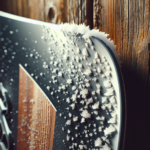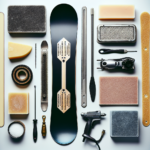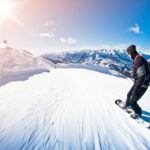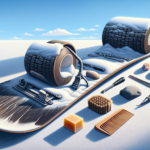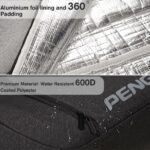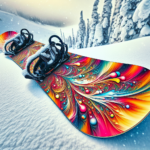So, you’re an avid snowboarder, and lately, you’ve been noticing that your runs aren’t as smooth as they used to be. You’ve probably spotted the culprit – dull edges. In the forthcoming article, you’ll learn accurately and safely how to sharpen the edges on your beloved snowboard. This valuable skill not only enhances your board’s performance and lifespan but keeps you safer on the slopes. Buckle up, it’s about to get interesting!
Understanding the Importance of Sharp Edges
Snowboarding, a thrilling and physically engaging activity, is favored by many. A vital aspect of having a pleasant snowboarding experience is understanding the significance of having sharp edges on your snowboard. They provide control and enhance the snowboard’s performance.
The Role of Sharp Edges for Control
The edges of your snowboard are essentially your steering wheel. The sharp edges cut into the snow, giving you precise control over your direction and speed. With sharp edges, you can turn efficiently and at your discretion, whether you are navigating a steep downhill or keeping pace on a flat surface.
The Effect of Worn Edges on Snowboarding Performance
The reverse side of the coin is that worn edges can seriously depreciate a snowboard’s performance. When the edges are dull, they are less efficient at cutting across the snow. This can cause the board to slip or skid instead of carving a neat path across the slope, causing significant instability. Dull edges make the board harder to control, especially at high speeds and on icy terrains, where grip is essential.
Maintaining Safety with Sharp Edges
Safety is paramount in snowboarding. Riding with sharp edges ensures increased stability and control, reducing the chances of accidents or injuries. It benefits beginners who are still learning to balance and experienced boarders who want to push their own boundaries in more challenging conditions.
What You Need to Sharpen Snowboard Edges
Just as a chef takes care of their knives, a snowboarder must be meticulous with their snowboard edges. Knowing what tools you need is just as important as knowing how to use them effectively.
Types of Snowboard Edge Sharpeners
There are many snowboard edge sharpeners available on the market, ranging from pocket-sized handheld devices for quick fixes to professional grade files for a more comprehensive sharpening. Choose a tool that suits your skill level and the condition of your edges.
Choosing the Right File for Sharpening
Getting the right file is also essential. The file you use should be able to shape and refine your edges without scraping off too much material. They come in different grits, so it’s important to pick one that suits your needs.
Additional Required Materials
Aside from the edge sharpener and the file, you’ll also need a few other materials. You’ll need a clean, dry cloth, a secure surface to hold your snowboard still during the sharpening process, and a gummy stone. This stone will be used to remove any small burs and smooth out your edges once you’ve finished sharpening.
Preparing Your Snowboard
Taking the time to correctly prepare your snowboard for sharpening is just as significant as the sharpening itself. Cleansing the edges and securing the snowboard are vital steps.
Cleaning Your Snowboard Edges
Cleaning your snowboard edges from any dirt and debris is the first step in the sharpening process. Use a cloth with a bit of base cleaner to wipe down the edges and make sure they’re clean before you start. Ensuring that the edges are free from dirt and wax will make the sharpening process more efficient.
Securing Your Snowboard for Sharpening
Secure your snowboard on a flat surface that can firmly hold it while you work on the edges. There are special snowboard vises available, but you can also DIY a secure setup using basic household items. The goal is to keep your board in place as you move the file or sharpening tool along the edge.
Identifying the Areas that Need Sharpening
Not all parts of the edge may need sharpening. Inspect your snowboard and identify the dull areas that need your attention. Use your finger to feel where the edges aren’t sharp, but be careful not to cut yourself!
Understanding the Snowboard Edge Angles
Each snowboard’s edges have two angles – the side edge angle and the base edge angle.
Understanding Side Edge Angle
The side edge angle is the angle at which your edge slants away from the board. This angle needs to be sharp enough to effectively cut into the snow when you are making a turn.
Understanding Base Edge Angle
The base edge angle is the tilt of the edge towards the base of your snowboard. An acute base edge angle means that your board will respond quickly to your movements and give you a sharper turn, which is handy in icy conditions.
Adjusting Your Edge Sharpener Angle
The ability to adjust your edge sharpener to match these angles is crucial. It allows you to sharpen your snowboard exactly how you want it—according to your style of riding and the conditions in which you’ll be snowboarding.
Starting the Sharpening Process
With your board prepared and your tools ready, you can now start the actual sharpening process.
Positioning the Edge Tool Correctly
Begin by positioning the edge tool correctly along the side of your board. It should lay flat against your board and align with your edge’s angle.
Applying Pressure While Sharpening
Now, gently glide the sharpener along the edge using pressure. Instead of pushing hard in an attempt to remove material quickly, it’s better to apply steady, moderate pressure and make multiple passes.
Shaping the Tip and Tail Edge
When you reach the tip and tail of your board, be careful not to round off the edge. These areas are crucial for advanced maneuvers, so they need to be sharp too.
Sharpening the Side Edges
Much of your control while snowboarding comes from the side edges of your board. That’s why they require a little extra TLC from your sharpener.
Applying More Focus on the Side Edges
The side edges are often the ones that wear down the quickest due to them being used so prolifically. As such, you’ll want to spend a little more time sharpening them than you do on your base edges.
Proper Technique When Working on Side Edges
It’s important to make long, smooth passes along the side edges. Start from one end of the snowboard and go all the way to the other end, keeping your sharpener squarely against the side of your board as you do so.
Problem Areas to Watch Out For
While sharpening, be cautious of any problem areas on your edge, such as nicks or burrs. If you encounter any of these, remember to align the edge tool correctly, apply even pressure, and make multiple passes until smooth.
Sharpening the Base Edges
While not as heavily used as the side edges, the base edges still play a critical role in your ride.
Consideration in Base Edge Sharpening
The base edges help to stabilize your board when you’re riding flat, and they assist with control in turns. You’ll want to sharpen these edges, but remember—not as frequently or heavily as the side edges.
Proper Tools for Base Edge Sharpening
When sharpening the base edges, the use of the right tools is paramount. Some tools are specifically designed for base edge work and will help you maintain the correct angle.
Techniques in Base Edge Sharpening
Similar to working the side edges, make long, smooth passes when sharpening. However, avoid over-sharpening or altering your base edge angles too much as it can affect how your board feels on snow.
Checking Your Work
After sharpening, it’s crucial to check your work to make sure the sharpening is even and effective.
Methods for Checking Sharpness
Run your finger gently along the edge—it should feel smooth, but with an edge to it. Another common method of checking sharpness is to see if the edge can lightly shave the top layer of a fingernail.
Correcting Mistakes or Uneven Sharpening
If you find any areas that are still dull or unevenly sharpened, it’s easy to go back and even things out. Just remember—take your time, and make multiple, careful passes instead of trying to rush the process.
Recognizing When Enough Has Been Removed
Recall that the aim of sharpening isn’t to remove a lot of material, but to reshape your edge. If your sharpener is scraping off large amounts of your board, it’s time to lessen your pressure or try a different technique.
Finishing Your Edges
Once you have evenly sharpened edges, it’s time to finish the job by smoothing them out.
Deburring Your Edges
The first step in finishing your edges is deburring, or removing any tiny metal pieces left behind after sharpening. Use a gummy stone to gently rub along your board’s edges. This process leaves your edges smooth and free of any rough spots.
Polishing Your Edges for Smoothness
Polishing your edges is a secret snowboard maintenance tip for achieving ultimate smoothness. Use a diamond stone or ceramic stone, run along the base and side edges for a final polishing touch that results in super smooth edges.
The Importance of a Smooth Edge Finish
A smooth edge finish is essential for precise control and high performance. It reduces friction and allows the snowboard to glide more efficiently over the snow.
Caring for Your Snowboard Post-Sharpening
Sharpening your snowboard edges is not a one-off task. Once you have sharpened your snowboard, how you care for it subsequently plays an integral role in maintaining the sharpness and overall lifespan of the board.
Proper Storage for Your Snowboard to Maintain Sharpness
Never lean your snowboard on its edge when not in use. Always store it vertically or horizontally on a soft surface. This precaution will prevent any potential dents or dulling of the edges.
Routine Check and Sharpening Frequency
You won’t have to sharpen your snowboard edges after every use. The frequency largely depends on the snow conditions you are often in. Icy conditions tend to wear out edges faster. Aim to check the sharpness of your board’s edges and sharpen them as necessary.
Other Tips for Prolonging Your Snowboard’s Edge Life
Regularly waxing your board, riding with good technique, and not dragging your board on concrete or rocks will help prolong the life of your snowboard’s edges. Remember, a well-kept snowboard will enhance your snowboarding experience.
Whew! Sounds like a lot, doesn’t it? But don’t worry—you’ll get the hang of it soon enough. Keeping your snowboard’s edges sharp will significantly improve your ride’s quality and, ultimately, your safety. Happy shredding!
- What Snowboard Bindings Should I Get? - January 23, 2024
- What Size Screws For Snowboard Bindings? - January 23, 2024
- How To Snowmobile On Water? - January 23, 2024


